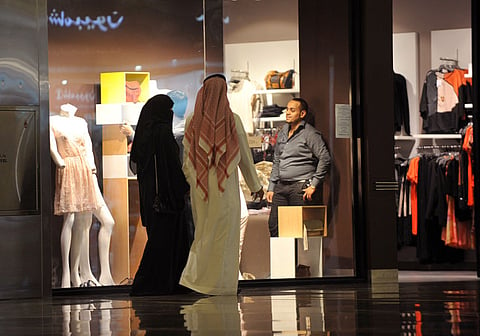Gulf sovereign wealth funds shift focus to local investments
GCC economies are redirecting bigger portion of foreign investments back to the region

Dubai: While they continue to reduce dependence on energy resources, GCC countries are increasingly spending locally and redirecting a greater portion of foreign investments back into the region.
According to a report by KPMG specialists released on Thursday, the shift is due to the debt problems afflicting the European Union and the Arab Spring, among other factors.
Invesco’s Middle East Asset Management study for 2012 suggests that the value of assets allocated to sovereign wealth funds (SWFs) invested locally have increased by 10 per cent from 2011.
Although GCC economies’ revenues increased by nearly 30 per cent and as the West are looking to tap into state-owned funds in the region, assets allocated to SWFs that invest abroad have declined by 1 per cent.
“It is anticipated that this apparent redirection of sovereign wealth will source a stable flow of funds into the region’s infrastructure aspirations and will facilitate growth and development of the local economies over the medium term,” KPMG said in its report.
The shift is evidenced by increased spending on local wage, as well as on domestic infrastructure projects.
Between 2013 and 2020, the GCC region plans to shell out $142 billion (Dh522.2 billion) on mega infrastructure development plans, the majority of which are rail and road projects. Increased spending is expected in Qatar, which won its bid to host the Fifa World Cup in 2022, and Abu Dhabi, which is positioning itself as a major global financial hub and global city.
The surplus funds of GCC economies that are invested in financial assets, amounting close to $1.7 trillion, account for about 30 per cent of global SWFs by assets under management (AUM). The world’s SWFs are currently valued at $5.3 trillion in AUM.
Analysts have observed that there has been a growing “appetite” to allocate GCC sovereign wealth in the region as governments are “keen to demonstrate that the region’s large commodity-linked wealth is reaching the local population”.
“SWFs in the Middle East appear to be viewing the West with caution and, as a result, have invested less internationally than they have done in the past,” KPMG analysts said.
Vikas Papriwal, KPMG’s head of SWFs and private equity said the recent challenges have led SWFs to evolve. “While the investment objectives in the region have certainly changed, including geographical and sector focus, diversification remains a key and common objective for Middle Eastern SWFs as countries in the region seek to reduce their reliance on energy, and oil and gas prices,” he said.
In view of the shift, Bradd Whittfield, the company’s transactions and restructuring associate director, noted that governments and organisations in the West who are looking to source funds from the region “need to be able to demonstrate a deep understanding of what is driving SWFs in the [Middle East] and be committed to making long-term relationships which add value to their investment policy.
“There is no doubt that, as liquidity has tightened in the West due to the financial crisis and more recently, the Eurozone sovereign debt crisis, Middle Eastern SWFs’ influence on the global economy has grown,” he added.
Sign up for the Daily Briefing
Get the latest news and updates straight to your inbox


![Latest discovery follows several 1,000-tonne-plus gold finds in the past year. [Illustrative image]](http://media.assettype.com/gulfnews%2F2024-11-27%2F9rs31cwr%2FStock_Gold_Mining_18c61d0bfc2_original_ratio.jpg?w=320&auto=format%2Ccompress&fit=max)
